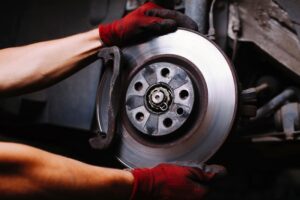
The Clunking Sound: Pinpointing Driveshaft Joint Problems
A clunking sound often signals trouble. Driveshaft joints wear with regular use. Ignoring the noise causes serious damage fast. Early detection prevents expensive repairs later. Drivers should listen carefully while driving daily. Routine inspection keeps vehicles safe on roads. Understanding the problem ensures proper maintenance is done. Every owner must recognize warning signs early. Safety depends on noticing unusual sounds immediately. Acting quickly protects vehicles from complete failure.
Common Causes of Driveshaft Noise
Worn joints create clunks during motion constantly. Lack of lubrication increases wear and friction quickly. Loose components produce vibrations and knocking sounds frequently. Heat and constant stress degrade joint materials over time. Damage often appears after driving rough roads. Rust weakens parts and reduces structural strength permanently. Misalignment adds stress to connected components steadily. Severe wear can stop driveshaft rotation entirely. Identifying noise early prevents larger mechanical failures efficiently. Replacement restores smooth operation and eliminates annoying sounds. Vehicles should always be serviced at trusted Asain and Domestic Auto Repair in Wilmington, NC.
Symptoms to Watch For
Clunks appear during acceleration or sudden stops. Vibration may occur while driving straight slowly. Uneven movement happens when turning sharply at speed. Squeaks sometimes occur while engaging brakes lightly. Grinding noises indicate severe internal joint damage immediately. Difficulty steering can signal driveshaft trouble before accident. Vehicles may jerk unexpectedly when shifting gears hard. Ignoring warning signs increases risk of serious accidents. Timely observation helps avoid costly engine repairs completely. Detecting problems early ensures continued safe driving always.
Inspection Techniques
Lift the vehicle safely off the ground first. Check for cracks and loose fittings immediately. Rotate wheels while observing joint movement carefully. Tap the joint lightly using a rubber mallet. Watch for abnormal play or unusual gaps carefully. Inspect surrounding components for wear or damage thoroughly. Listen for irregular noises during slow wheel rotation. Compare left and right side movements for differences. Accurate inspection prevents sudden roadside failures completely. Professional inspection guarantees repairs are done correctly.
Repair and Replacement
Damaged joints require replacement to restore proper function. Lubrication cannot fix worn or cracked parts alone. Correct replacement ensures long term durability and safety. Tighten bolts according to exact torque specifications strictly. Balancing the driveshaft reduces vibration after repair work. Test drive confirms smooth rotation and quiet operation. Ignoring proper repair can lead to repeated failures soon. Quality replacement parts improve performance and vehicle safety significantly. Timely repair prevents damage to other drivetrain components. Prompt repairs save money and prevent issues.
Conclusion
Loud clunking indicates significant driveshaft joint problems. Ignoring noise causes component failure. Early detection and repair safeguard vehicle investments. Initial checks catch problems before they escalate. Professional service ensures safe and effective repair. Preventive care prolongs joint function. Attention to warning signs ensures safety and peace of mind. Safe autos require daily maintenance.



